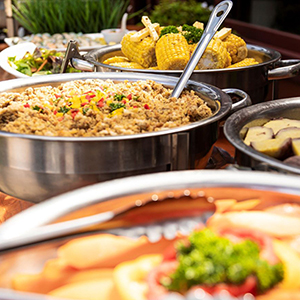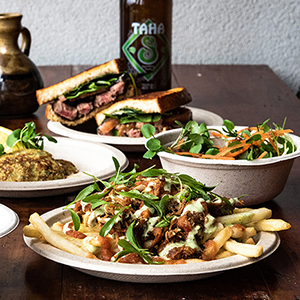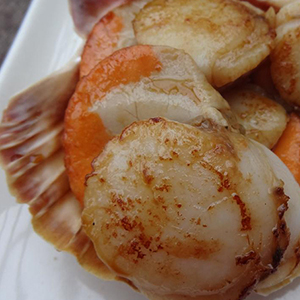

 When Pākehā (European) settlers arrived in New Zealand, Māori embraced the new foods they brought, and began cultivating them.
These crops included wheat, potatoes, maize, carrots, cabbage and other vegetables.
Māori also began raising sheep, pigs, goats and poultry.
When Pākehā (European) settlers arrived in New Zealand, Māori embraced the new foods they brought, and began cultivating them.
These crops included wheat, potatoes, maize, carrots, cabbage and other vegetables.
Māori also began raising sheep, pigs, goats and poultry.
![]()
 Mānuka was named 'tea tree' by Captain James Cook and English botanist Joseph Banks when they
found it in Mercury Bay in 1769. Mānuka wood chips can be used to add flavour when smoking food,
but it is best known as the source of mānuka honey, which is used to produce a growing list of products
with outstanding medicinal and antiseptic properties.
Mānuka was named 'tea tree' by Captain James Cook and English botanist Joseph Banks when they
found it in Mercury Bay in 1769. Mānuka wood chips can be used to add flavour when smoking food,
but it is best known as the source of mānuka honey, which is used to produce a growing list of products
with outstanding medicinal and antiseptic properties.
![]()
 Pūhā, also known as sow thistle, is a green-dark green plant often found growing as a weed.
The stem contains a milky coloured sap. Eaten raw, the stem and leaves have a bitter taste.
Cooking does not remove the bitterness but it can be reduced by rubbing the pūhā plants together (vigorously)
under running water. Pūhā is traditionally served cooked with pork.
Pūhā, also known as sow thistle, is a green-dark green plant often found growing as a weed.
The stem contains a milky coloured sap. Eaten raw, the stem and leaves have a bitter taste.
Cooking does not remove the bitterness but it can be reduced by rubbing the pūhā plants together (vigorously)
under running water. Pūhā is traditionally served cooked with pork.
![]()
 Horopito, also known as the New Zealand pepper tree, can be used to replace conventional pepper in cooked dishes. One of the most popular
fish to eat in New Zealand, tarakihi is a
common feature on fish and chip shops' menus. Yet tarakihi fish stocks have plummeted to crisis level.
Horopito, also known as the New Zealand pepper tree, can be used to replace conventional pepper in cooked dishes. One of the most popular
fish to eat in New Zealand, tarakihi is a
common feature on fish and chip shops' menus. Yet tarakihi fish stocks have plummeted to crisis level.
![]()
 Kawakawa trees are mostly found in coastal areas of New Zealand in damp bush. The heart-shaped leaves are
dried, ground and then used to season, adding a rich forest aroma with a light minted flavour.
Kawakawa trees are mostly found in coastal areas of New Zealand in damp bush. The heart-shaped leaves are
dried, ground and then used to season, adding a rich forest aroma with a light minted flavour.
![]()
 Kōwhitiwhiti or watercress grows on the edge of freshwater rivers and creeks around New Zealand. Eaten raw or cooked,
it has a mild mustard flavour.
Kōwhitiwhiti or watercress grows on the edge of freshwater rivers and creeks around New Zealand. Eaten raw or cooked,
it has a mild mustard flavour.
![]()
 Rēwena paraoa (potato bread) tastes sweet and has a slight sour/tang flavour to it, a result of the
long period of fermentation it undergoes. The bread is wonderfully textured and flavoursome.
Rēwena paraoa (potato bread) tastes sweet and has a slight sour/tang flavour to it, a result of the
long period of fermentation it undergoes. The bread is wonderfully textured and flavoursome.
![]()
 Known elsewhere as sweet potato, New Zealand kūmara is particularly sweet and grows in the semi-tropical regions
of the North Island.
It is available in red, gold or orange varieties.
Known elsewhere as sweet potato, New Zealand kūmara is particularly sweet and grows in the semi-tropical regions
of the North Island.
It is available in red, gold or orange varieties.
![]()